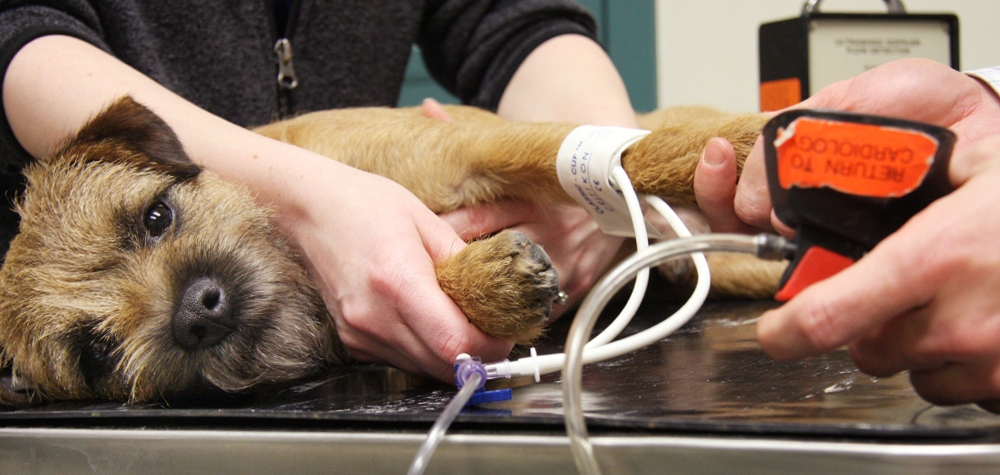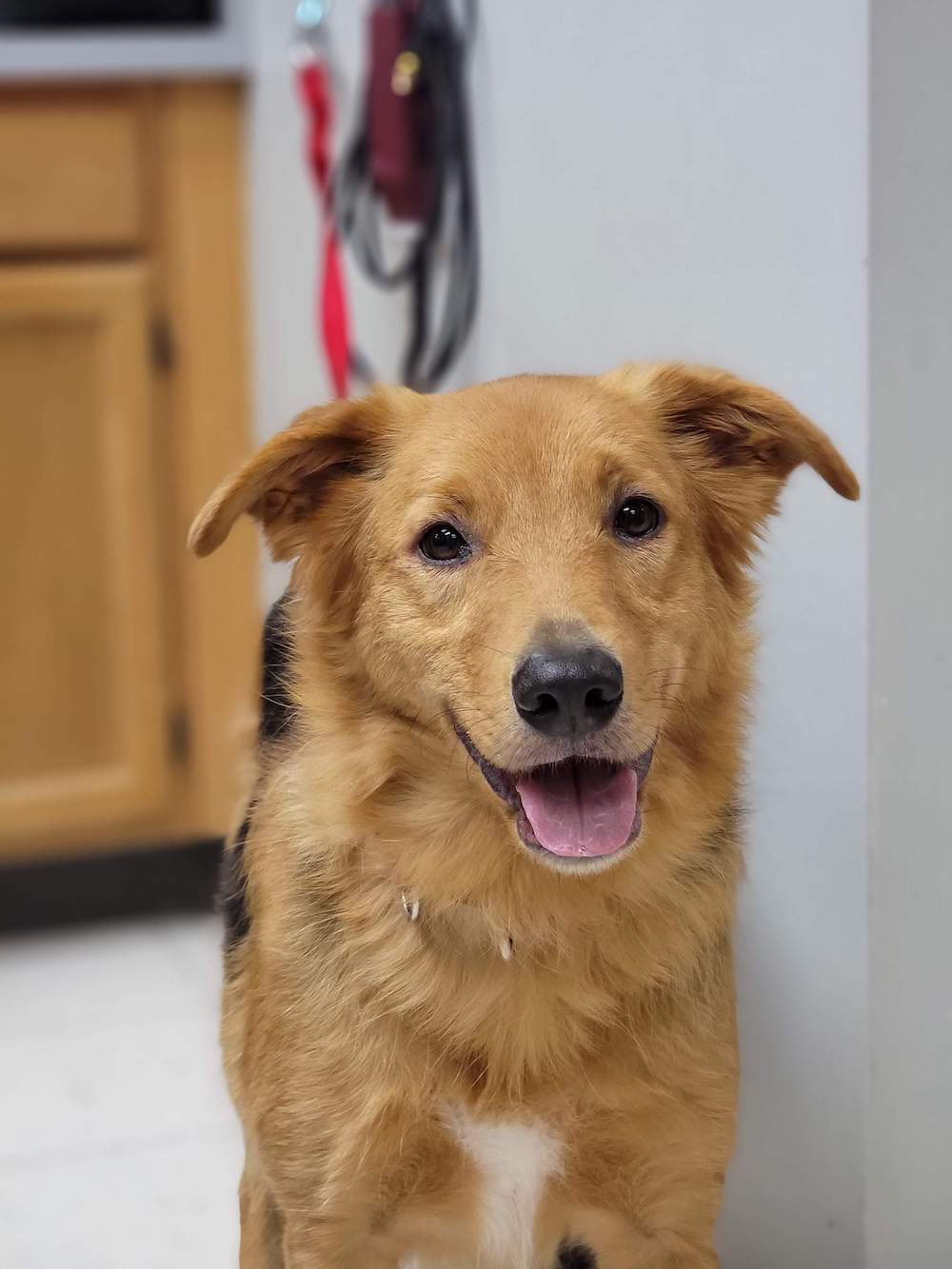What Are CT Scans For Animals, and When Are They Needed?}
Wiki Article
The Role of Ultrasound and CT Check in Modern Vet Practices: Insights From Experienced Professionals
In modern-day vet practices, ultrasound and CT scans substantially boost analysis abilities. These imaging methods offer vital understandings into animal health and wellness, leading treatment choices. Experienced specialists recognize the distinct advantages of each method. Ultrasound provides real-time evaluations, while CT checks provide intricate physiological details. Comprehending their roles and applications raises vital questions about their effect on patient outcomes and the future of veterinary diagnostics. What understandings can be gotten from their integrated use?Recognizing Ultrasound in Veterinary Medication
Ultrasound is a necessary analysis tool in veterinary medication, using a non-invasive approach to picture interior frameworks. This imaging technique uses high-frequency acoustic waves to produce real-time pictures of cells and body organs, enabling vets to evaluate conditions without medical intervention. Common applications consist of examining the heart, liver, kidneys, and reproductive body organs, along with monitoring pregnancies.The treatment is relatively fast and can be executed in various settings, making it an available option for veterinarians. Unlike radiography, ultrasound supplies in-depth details concerning soft cells and blood flow, which is crucial for precise diagnoses.Veterinary experts count on ultrasound to find problems such as lumps, cysts, and liquid buildup. Its ability to assist biopsies and various other treatments even more boosts its energy in medical practice. By using a reliable and secure way to examine interior makeup, ultrasound has actually come to be a foundation of modern-day veterinary diagnostics.
The Benefits of CT Scans for Pet Diagnostics
CT checks deal considerable advantages in vet diagnostics by offering boosted precision in determining internal conditions (CT Scans For Dogs). As a non-invasive imaging method, they ensure the safety and security and convenience of pets during assessments. Furthermore, CT scans help with a detailed analysis of internal structures, enabling for extra efficient therapy planningEnhanced Analysis Precision
Advancements in imaging technology have actually significantly enhanced diagnostic accuracy in veterinary medication, especially through making use of CT scans. These scans supply detailed cross-sectional pictures of a pet's internal frameworks, permitting vets to determine problems with precision. The high resolution and three-dimensional capacities of CT imaging facilitate the discovery of conditions such as tumors, cracks, and internal blood loss that may be missed out on with standard imaging techniques. Additionally, CT scans can assist in pre-surgical preparation by providing a detailed sight of physiological relationships. This degree of information not only boosts the accuracy of medical diagnoses but additionally help in customizing effective treatment plans. Subsequently, the integration of CT innovation right into vet methods is transforming the landscape of pet healthcare, improving outcomes for clients.Non-Invasive Imaging Strategy
The introduction of non-invasive imaging strategies has actually transformed pet diagnostics, with CT checks becoming a famous device in vet techniques. These scans give high-resolution, cross-sectional images of a pet's internal structures, permitting veterinarians to assess complex conditions without the requirement for invasive treatments. The advantages of CT scans include their ability to detect tumors, cracks, and internal blood loss with amazing precision. Furthermore, they assist in the examination of soft tissues and body organs, improving analysis capabilities. The rate of CT scanning allows quick decision-making, which is important in emergency scenarios. By minimizing tension and discomfort for the pet, CT scans contribute to an extra humane technique to diagnostics, ultimately improving treatment end results and progressing veterinary treatment.Comprehensive Internal Assessment
An extensive internal evaluation is important for exact diagnosis and efficient therapy in veterinary medicine. CT scans offer considerable benefits hereof, offering comprehensive cross-sectional photos of a pet's inner frameworks. This innovative imaging method improves visualization of complicated physiological areas, making it possible for veterinarians to identify problems such as tumors, cracks, and internal bleeding with better accuracy. In addition, CT scans assist in the evaluation of conditions that might be challenging to detect through typical techniques. The rate and precision of CT imaging also contribute to prompt treatments, boosting patient outcomes. As vet practices increasingly include CT modern technology, the advantages of extensive interior assessments become apparent, strengthening the significance of this tool in contemporary veterinary diagnostics.Comparing Ultrasound and CT Imaging Techniques
While both ultrasound and CT imaging serve essential roles in veterinary diagnostics, each strategy provides distinct benefits and limitations that can affect clinical decision-making. Ultrasound is particularly valued for its real-time imaging capabilities, permitting vets to observe vibrant physiological procedures. This strategy is non-invasive, mobile, and does not include ionizing radiation, making it a safer alternative for both clinicians and pets. Ultrasound may have restrictions in imagining particular physiological frameworks or deep tissues.Conversely, CT imaging provides detailed cross-sectional sights of the body, allowing for specific localization of irregularities. It masters reviewing complicated body organs and structures, especially in the thorax and abdomen. CT scans require sedation or anesthetic in lots of situations and involve exposure to ionizing radiation. Ultimately, the option in between ultrasound and CT depends upon the particular professional situation, the location of interest, and the necessity of the analysis needs.Situation Researches: Successful Diagnoses Via Imaging
Situation researches show the substantial improvements in diagnostic precision achieved with innovative imaging technologies like ultrasound and CT scans in vet techniques. These improvements not just enhance the detection of numerous problems but likewise promote timely and effective treatment plans. Evaluating certain instances can highlight the transformative impact of these imaging methods on vet medication.Analysis Precision Improvements

Imaging Modern Technology Advancements
As vet imaging modern technology remains to progress, its influence on analysis capabilities becomes progressively obvious. Current situation research studies highlight the successful application of advanced ultrasound and CT scan techniques in identifying complex problems. As an example, a vet facility utilized high-resolution CT scans to detect a rare form of lung cancer cells in a canine, which standard imaging had actually missed. An ultrasound examination disclosed a stomach mass in a cat, prompting prompt medical intervention and a positive end result. These developments not just enhance analysis precision yet likewise allow vets to develop targeted therapy plans. By leveraging advanced imaging modern technologies, vet professionals are considerably boosting client treatment, causing much more effective administration of various wellness conditions in pets.
The Role of Imaging in Emergency Situation Vet Care
Imaging plays an essential duty in emergency vet treatment, offering vets with important info needed to make fast, enlightened decisions. In immediate situations, methods like ultrasound and CT scans make it possible for professionals to promptly evaluate a pet dog's internal frameworks, recognizing crucial problems such as internal bleeding, cracks, or body organ irregularities. These imaging modalities permit real-time evaluations, promoting timely treatments that can be life-saving. Ultrasound is vital for reviewing soft tissue injuries and conditions like fluid accumulation, while CT checks deal thorough images of complex anatomical structures, important for diagnosing trauma cases. The speed and accuracy of these imaging techniques enhance the vet's capability to create efficient therapy plans, making certain the most effective feasible results for their individuals. The combination of sophisticated imaging technologies right into emergency situation veterinary techniques is not just helpful but increasingly essential, as it enhances diagnostic capabilities and enhances total animal treatment during crucial minutes.
Training and Know-how in Veterinary Imaging
Advanced imaging methods such as ultrasound and CT scans are crucial for effective veterinary care, the effective execution of these technologies heavily depends on the training and knowledge of veterinary experts. Proficient use imaging tools calls for comprehensive understanding of composition, pathology, and the concepts underlying each method. Vet specialists must go through specific training to properly analyze imaging outcomes, which is vital for identifying problems and intending treatment.Certifications and find out here now proceeding education in vet imaging boost the skills of practitioners, enabling them to stay updated with technological improvements. Cooperation in between radiologists and vets usually leads to improved analysis precision, as specialists can supply understandings into complex cases. On top of that, practical experience in dealing with imaging tools cultivates self-confidence in its application. Eventually, the high quality of veterinary imaging services is straight associated to the level of training and know-how had by the experts utilizing these important diagnostic devices.Future Patterns in Diagnostic Imaging for Animals
With the fast developments in technology, vet analysis imaging is poised for substantial development in the coming years. Emerging trends show a shift in the direction of even more obtainable and mobile imaging modalities, such as portable ultrasound gadgets, which could boost area diagnostics. Additionally, the assimilation of expert system is anticipated to reinvent picture analysis, permitting quicker and extra precise interpretations of results.Moreover, innovations in 3D imaging strategies and computed tomography will certainly give vets with more complete views of pet composition, resulting in enhanced treatment plans. Online fact technology may additionally contribute in surgical preparation and education and learning, offering veterinarians an unique point of view on intricate cases.As telemedicine continues to grow, remote consultations assisted in by analysis imaging will certainly come to be much more usual, allowing experts to aid general specialists in real-time. On the whole, these patterns are established to More Help enhance the effectiveness and performance Get More Info of veterinary treatment, ultimately improving animal end results.Frequently Asked Inquiries
How Much Do Ultrasound and CT Checks Price in Veterinary Clinics?
The expenses of ultrasound and CT scans in vet facilities generally vary from $300 to $1,500, relying on factors such as place, facility kind, and specific treatments needed for the pet's medical diagnosis and treatment.
Exist Any Threats Connected With Ultrasound and CT Scans for Pet Dogs?
Ultrasound and CT scans normally pose marginal risks to pet dogs. However, prospective concerns consist of sedation reactions and direct exposure to anesthetics. CT Scans For Dogs. Veterinarians meticulously examine each case to alleviate any kind of dangers related to these diagnostic proceduresFor How Long Do Ultrasound and CT Procedures Typically Take?
Ultrasound procedures usually take about half an hour to an hour, relying on the complexity. CT scans, being more thorough, usually need 30 mins to 90 minutes, consisting of prep work and recovery time for the family pet.Can All Veterinarians Perform Ultrasounds and CT Scans?
Not all vets can carry out ultrasounds and CT scans. Specialized training and certification are usually needed to assure competency in these sophisticated imaging techniques, which may restrict their availability to veterinarians with added qualifications and resources.What Sorts Of Animals Benefit The Majority Of From These Imaging Techniques?
Certain animal varieties, especially pet dogs and pet cats, benefit significantly from ultrasound and CT scans. These imaging methods boost diagnostic precision for problems like growths, inner injuries, and body organ abnormalities, causing better therapy results and individual treatment. The high resolution and three-dimensional abilities of CT imaging assist in the discovery of conditions such as tumors, fractures, and inner blood loss that might be missed with traditional imaging methods. Instance researches highlight the substantial renovations in diagnostic accuracy achieved via innovative imaging modern technologies like ultrasound and CT scans in vet methods. Improving diagnostic accuracy in vet practices has actually been substantially assisted by improvements in imaging modern technologies such as ultrasound and CT scans. Advanced imaging strategies such as ultrasound and CT scans are essential for reliable vet care, the successful execution of these modern technologies greatly depends on the training and competence of veterinary specialists. Vet experts should undergo specialized training to accurately analyze imaging outcomes, which is crucial for identifying conditions and preparing treatment.Certifications and continuing education in veterinary imaging boost the abilities of specialists, enabling them to stay updated with technical innovations.Report this wiki page